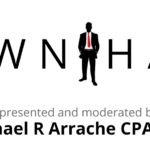Estimated income tax safe harbor rules are very important and for the most part straightforward. Please see below for a brief summary from the IRS concerning Federal estimated taxes.
Note that the IRS estimated tax rules are a common framework for other taxing authority as well, but you should confirm with each taxing authority to confirm rules pertaining to estimated taxes, prepayments, etc.
Estimated Taxes
Taxes must be paid as you earn or receive income during the year, either through withholding or estimated tax payments. If the amount of income tax withheld from your salary or pension is not enough, or if you receive income such as interest, dividends, alimony, self-employment income, capital gains, prizes and awards, you may have to make estimated tax payments. If you are in business for yourself, you generally need to make estimated tax payments. Estimated tax is used to pay not only income tax, but other taxes such as self-employment tax and alternative minimum tax.
If you don’t pay enough tax through withholding and estimated tax payments, you may be charged a penalty. You also may be charged a penalty if your estimated tax payments are late, even if you are due a refund when you file your tax return.
Estimated tax requirements are different for farmers and fishermen. Publication 505, Tax Withholding and Estimated Tax, provides more information about these special estimated tax rules.
Who Must Pay Estimated Tax
Individuals, including sole proprietors, partners, and S corporation shareholders, generally have to make estimated tax payments if they expect to owe tax of $1,000 or more when their return is filed.
Corporations generally have to make estimated tax payments if they expect to owe tax of $500 or more when their return is filed.
You may have to pay estimated tax for the current year if your tax was more than zero in the prior year. See the worksheet in Form 1040-ES, Estimated Tax for Individuals (PDF), or Form 1120-W, Estimated Tax for Corporations (PDF), for more details on who must pay estimated tax.
Who Does Not Have To Pay Estimated Tax
If you receive salaries and wages, you can avoid having to pay estimated tax by asking your employer to withhold more tax from your earnings. To do this, file a new Form W-4 (PDF) with your employer. There is a special line on Form W-4 for you to enter the additional amount you want your employer to withhold.
You don’t have to pay estimated tax for the current year if you meet all three of the following conditions.
- You had no tax liability for the prior year
- You were a U.S. citizen or resident for the whole year
- Your prior tax year covered a 12-month period
You had no tax liability for the prior year if your total tax was zero or you didn’t have to file an income tax return. For additional information on how to figure your estimated tax, refer to Publication 505, Tax Withholding and Estimated Tax.
How To Figure Estimated Tax
Individuals, including sole proprietors, partners, and S corporation shareholders, generally use Form 1040-ES (PDF), to figure estimated tax.
To figure your estimated tax, you must figure your expected adjusted gross income, taxable income, taxes, deductions, and credits for the year.
When figuring your estimated tax for the current year, it may be helpful to use your income, deductions, and credits for the prior year as a starting point. Use your prior year’s federal tax return as a guide. You can use the worksheet in Form 1040-ES(PDF) to figure your estimated tax. You need to estimate the amount of income you expect to earn for the year. If you estimated your earnings too high, simply complete another Form 1040-ES worksheet to refigure your estimated tax for the next quarter. If you estimated your earnings too low, again complete another Form 1040-ES worksheet to recalculate your estimated tax for the next quarter. You want to estimate your income as accurately as you can to avoid penalties.
You must make adjustments both for changes in your own situation and for recent changes in the tax law.
Corporations generally use Form 1120-W (PDF), to figure estimated tax.
When To Pay Estimated Taxes
For estimated tax purposes, the year is divided into four payment periods. Each period has a pay online, by phone, or by mail, refer to the section of Form 1040-ES titled “How to Pay Estimated Tax.” For additional information, refer to Publication 505, Tax Withholding and Estimated Tax.
Using the Electronic Federal Tax Payment System (EFTPS) is the easiest way for individuals as well as businesses to pay federal taxes. Make ALL of your federal tax payments including federal tax deposits (FTDs), installment agreement and estimated tax payments using EFTPS. If it’s easier to pay your estimated taxes weekly, bi-weekly, monthly, etc. you can, as long as you’ve paid enough in by the end of the quarter. Using EFTPS, you can access a history of your payments, so you know how much and when you made your estimated tax payments.
Corporations must deposit the payment using the Electronic Federal Tax Payment System. For additional information, refer to Publication 542, Corporations.
Penalty for Underpayment of Estimated Tax
If you didn’t pay enough tax throughout the year, either through withholding or by making estimated tax payments, you may have to pay a penalty for underpayment of estimated tax. Generally, most taxpayers will avoid this penalty if they owe less than $1,000 in tax after subtracting their withholdings and credits, or if they paid at least 90% of the tax for the current year, or 100% of the tax shown on the return for the prior year, whichever is smaller. There are special rules for farmers and fishermen. Please refer to Publication 505, Tax Withholding and Estimated Tax, for additional information.
However, if your income is received unevenly during the year, you may be able to avoid or lower the penalty by annualizing your income and making unequal payments. Use Form 2210 (PDF), Underpayment of Estimated Tax by Individuals, Estates, and Trusts (or Form 2220, Underpayment of Estimated Tax by Corporations),to see if you owe a penalty for underpaying your estimated tax. Please refer to the Form 1040 Instructions (PDF), Form 1040A Instructions (PDF), or Form 1120 Instructions (PDF), for where to report the estimated tax penalty on your return.
The penalty may also be waived if:
- The failure to make estimated payments was caused by a casualty, disaster, or other unusual circumstance and it would be inequitable to impose the penalty, or
- You retired (after reaching age 62) or became disabled during the tax year for which estimated payments were required to be made or in the preceding tax year, and the underpayment was due to reasonable cause and not willful neglect.



